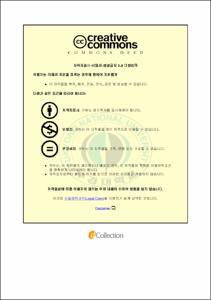선박 연료유 잔존량 추정모델을 이용한 침몰선박 위해도 평가개선 연구
- Alternative Title
- A Study on Development of Risk Assessment for Sunken Vessels Using Remaining-Fuel Estimations Model
- Abstract
- Abstract
The Nairobi International Convention on the Removal of Wrecks(The Nairobi Convection, 2007) consequently will enter into force on April 2015, 1 year after Denmark became the 10th country to ratify it on April 2014. As wrecks are major risks for safety and pollution, the Nairobi Convection will be greater harmonisation of the laws on wreck removal internationally to remove wrecks quickly and effectively and to provide protection against such risks.
As of September 2014, over 2,000 sunken vessels are found on the territorial sea of Korea. Sunken vessels should be had harmful impacts on marine environment because of oils and chemicals in the sunken vessels. Moreover, temporary or continuous spill of remaining harmful substances such as crude oil and chemicals occur a secondary pollution in the ocean and are likely to become factors causing marine accidents in major port or sea route.
The government have been promoting sunken vessels management business to grasp the current situation of sunken vessels. Furthermore, they developed risk assessment which can evaluate potential risk quantitatively for sunken vessels in order to establish national management system for sunken vessels.
In this study, analyzed marine accidents in Korea and overlooked sunken vessel management system with database program and sunken vessels distribution chart. In addition, as comparison sunken vessel management database and risk assessment factor, draw the limitation of the present risk assessment. Marks of present risk assessment changed greatly depending on quantity of remaining fuel oils, and the list of remaining fuel oils omitted in status report of sunken vessels. Therefore, the aim of the study is to estimate and develop model for quantity of remaining fuel oils and verify the estimation remaining fuel throughout operating vessels at present.
To accomplish the purpose of study, applied this verified estimation model to current risk assessment and recommend guideline for an accurate sunken vessels risk assessment and various improvement method of sunken vessels management system.
- Issued Date
- 2015
- Awarded Date
- 2015. 2
- Type
- Dissertation
- Publisher
- 부경대학교
- Alternative Author(s)
- CHANG, WOOJIN
- Affiliation
- 해양개발학과
- Department
- 산업대학원 해양개발학과
- Advisor
- 이인철
- Table Of Contents
- 1. 서론 1
1.1. 연구배경 및 목적 1
1.2. 연구내용 및 방법 4
2. 우리나라의 침몰선박 현황과 위해도 평가 6
2.1. 우리나라 해역의 해난사고 및 해양사고 현황 6
2.2. 침몰선박 관리체계 7
2.2.1 관련법령에 따른 침몰선박의 관리주체와 관리내용 9
2.2.2 기관별 침몰선박 정보의 일원화 11
2.2.3 침몰선박현황 보고체계 13
2.3. 침몰선박 관리시스템과 분포도 시스템 14
2.3.1 침몰선박 관리시스템 14
2.3.2 침몰선박 분포도시스템 16
2.4. 침몰선박 현황분석 18
2.4.1 선종별 침몰선박 현황 19
2.4.2 톤수별 침몰선박 현황 20
2.4.3 해역별 침몰선박 현황 20
2.4.4 100톤 이상 침몰선박 현황 21
2.5. 침몰선박 관리시스템 데이터베이스 구조 23
2.6. 침몰선박 위해도 평가 26
2.6.1 외국의 침몰선박 위해도 평가 26
2.6.2 우리나라의 침몰선박 위해도 평가 28
2.7. 침몰선박 데이터베이스 구조와 위해도 평가항목과의 관계 30
2.8. 침몰선박의 위해도 평가 결과 31
2.9. 현행 침몰선박 위해도 평가의 한계 32
3. 침몰선박의 연료유 잔존량 추정과 적용 37
3.1. 외국의 연료유 잔존량 추정사례 37
3.2. 기존 선박의 자료조사 39
3.2.1 Bulk Carrier(일반화물선) 40
3.2.2 Dry Cargo(컨테이너선) 41
3.2.3 Chemical Tanker(케미컬 운반선) 43
3.2.4 Oil Tanker(유조선) 44
3.3. 선박 연료유 적재량 추정 방법 46
3.3.1 일반화물선의 연료유 적재량 추정 46
3.3.2 컨테이너선의 연료유 적재량 추정 52
3.3.3 케미컬 운반선의 연료유 및 위험화물 적재량 추정 57
3.3.4 유조선의 연료유 및 위험화물 적재량 추정 60
3.3.5 선종별 연료유 및 위험화물에 대한 추정모델 비교 62
3.4. 선박 연료유 잔존량 추정 방법 64
3.5. 선박 연료유 최대적재량 및 연료소모량 추정모델의 검증 65
3.6. 일반관리 대상 침몰선박의 위해도 재평가 69
3.6.1 일반관리 대상 침몰선박의 연료유 최대적재량 추정 69
3.6.2 일반관리 대상 침몰선박의 연료유 잔존량 추정 71
3.6.3 연료유 잔존량 추정에 따른 위해도 재평가 74
4. 요약 및 결론 76
5. 제언 80
참고문헌 82
- Degree
- Master
- Files in This Item:
-
-
Download
 선박 연료유 잔존량 추정모델을 이용한 침몰선박 위해도 평가개선 연구.pdf
기타 데이터 / 2.5 MB / Adobe PDF
선박 연료유 잔존량 추정모델을 이용한 침몰선박 위해도 평가개선 연구.pdf
기타 데이터 / 2.5 MB / Adobe PDF
-
Items in Repository are protected by copyright, with all rights reserved, unless otherwise indicated.